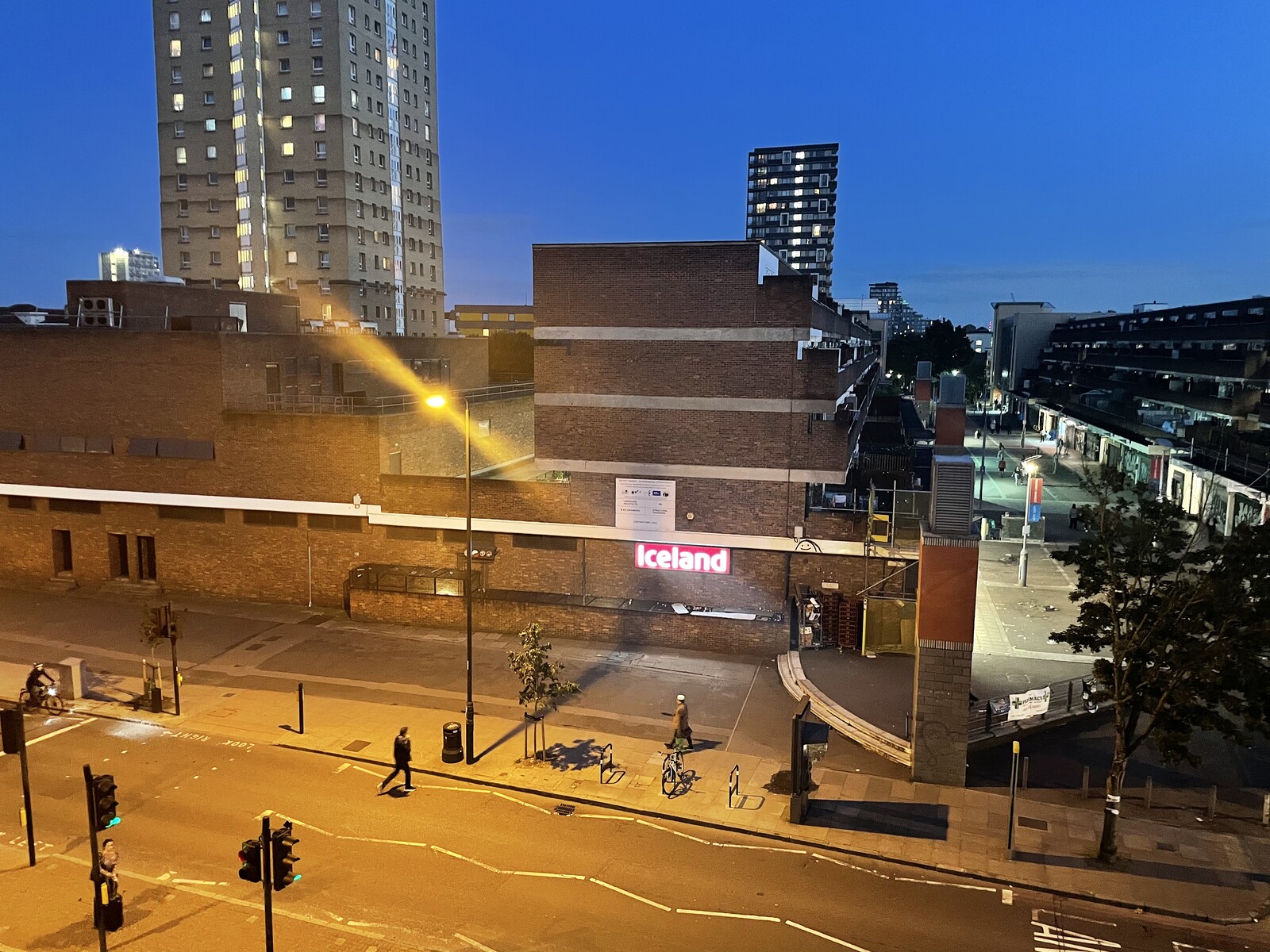Regular readers of this column will have noticed a change in the image accompanying it. Where these letters were previously introduced by a few lines snatched from books the editors happened to have on their shelves, this one is paired with a view of London from the desk of artist and writer Laura Grace Ford. It is the first in a series of photographs taken from artists’ workspaces, and reflects a desire not only to freshen things up but also to respond to changed circumstances.
We started writing these letters eighteen months ago, when the pandemic was beginning its spread across western Europe and into the Americas. We twinned them with fragments of poetry in the hope that encountering the same lines at the same time as other readers might generate a fleeting sense of community across the lockdowns. In the months that followed, we often found escape from isolation in simple gestures towards shared experience: a friend sending a book through the post and then ringing to talk about it; watching a gallery’s online screening program and discussing it in real time with colleagues on WhatsApp.
That turbulent period is not ended, but some of the old freedoms have been restored. The resumption of international travel has allowed the art world caravan to start up again, and this month we’ll be covering the return of staples from Art Basel to the Bienal de São Paulo. The museums are bustling, private views are once again busy with more-and-less generous-spirited discussion about who is in and what is out, and everyone is eager to get out and see new things. This is to be welcomed with enthusiasm, but the question remains of how changes precipitated by the pandemic—and intersecting responses to social injustice and climate disaster—will carry over into a hastily re-established normal.
If we’ve gleaned anything from the first exhibitions of work made under the lockdowns, it’s that prolonged attention to the place in which you are confined can be imaginatively liberating. There is no contradiction here: Bachelard wrote that “a house that has been experienced is not an inert box [because] inhabited space transcends geometrical space.” Which is to say that you can expand your intellectual horizons without leaving the apartment, never mind the neighborhood, and that time invested in your environment is never wasted. Taken further, it might also mean that culture—the “inhabited space” of human histories and ideas—is at once local and translocal: always inflected by the circumstances of its creation but not delimited by them. The most effective way to access other cultures is not to hop on a plane but to participate in the one that surrounds you.
The editors met recently to discuss the themes for the year to come. One of the few things we could agree on was that a generation’s relationship to place has changed. The recalibrated Bienal de São Paulo and “art weeks” in Brussels and Berlin might offer some early indicators of how that change will manifest, and this September we’ll carry reports from writers based in those cities alongside our usual mix of interviews, features, and reviews from around the world. Yet it remains the case that wherever you are reading this, the space of culture is not elsewhere. It’s right outside your window.
Laura Grace Ford is a London-based artist and writer and the author of Savage Messiah (Verso, 2011). Her work is included in the forthcoming Coventry Biennial.

